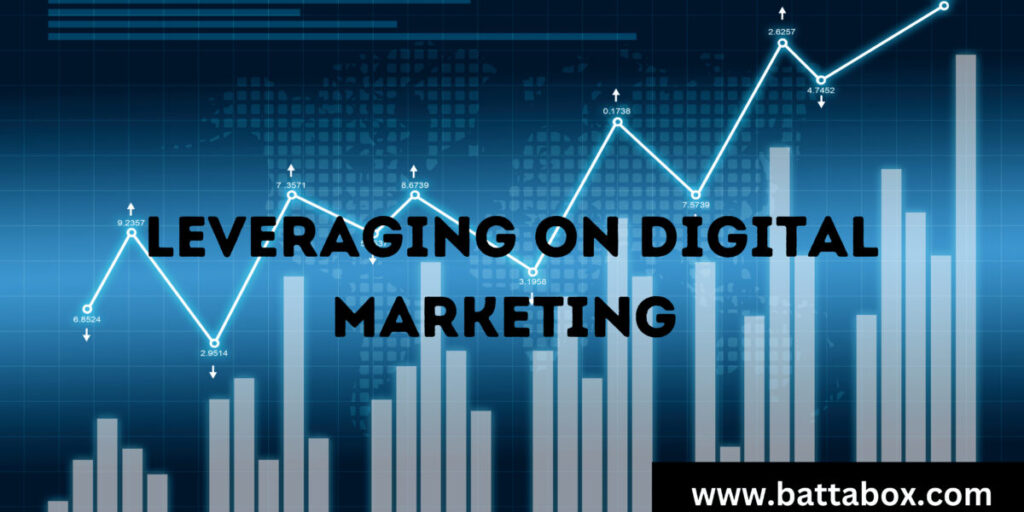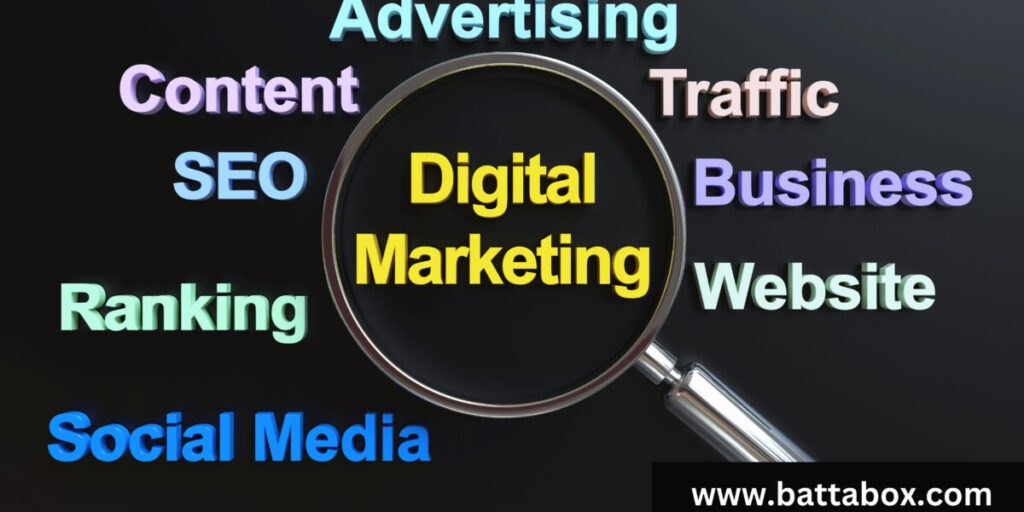The International Labour Organization (ILO) had in 2020, estimated a 6.7% decline in work hours towards the second quarter of the year. This projection would have resulted in 195 million full-time jobs lost to the COVID-19 pandemic. However, variants of the virus beat the statistics provided, to a 20.6% increase in close quarters of 2021. Thus increasing the spread and reducing productivity.

Business owners- local business owners precisely, felt mostly the economic implication of the pandemic. Where their business was restricted and customers confined by several lock-down protocols.
Existing strategies to conduct and run businesses remotely were taken more seriously in 2021, with digital marketing at the leading front. This strategy was regarded as the best and only marketing strategy suitable for the time, but has now been adopted post-pandemic.
The impact of digital marketing on businesses during and after covid-19 has therefore been modeled for integration into current and future marketing roles.
The advantages and methods for incorporation into business services further builds this context.
What is Digital Marketing?
To capture the pain of customer/consumer outreach,
“Digital marketing, also called online marketing, is the promotion of brands to connect with potential customers using the internet and other forms of digital communication. This includes not only email, social media, and web-based advertising, but also text and multimedia messages as a marketing channel.”
From statistics, digital marketing as against traditional marketing, has been proven to scale through several levels of expectations (metrics) even in caveats of uncertainty during global crises. Metrics as reach, audience/market targeting, costs, personalization, etc. all of which are discussed here.
Implications of Digital Marketing in Today’s Businesses
The global internet population has been estimated to be at about 5 billion active users and an estimated 1.7 million unique IPs of visitors on average for leading websites worldwide.
Google records an average click-through rate (CTR) of 28.5% for the first organic search result and 99.3% for the 1st to 10th position of whatever search volume (SV) that keyphrase commands; bing records lesser for both variables.
81% of the American population go online daily and 31% are always almost online.
Further interpretation of the statistics provided above shows that in the business world where everyone is a potential client, 81% of Americans are potential clients to several business transactions.
31% of the flickering daily internet-user population are probable converts for a marketing funnel promotion. About 28.5% of the search volume attributed to a keyphrase is more likely to begin the conversion funnel process of a thorough digital strategy implemented on a website; and this is just one aspect of digital marketing.
Digital marketing expands the growth of a holistic marketing approach which then affects ROI.
How Companies Can Take Advantage of Digital Marketing
The methods of benefiting from digital marketing is highlighted in its various advantages beginning from an understanding in the following context:
Clients and sales drive a business, and marketing brings the clients to a company’s front door. Digital marketing offers a chance to bring 83% mutually business driven clients to that front door, while the remaining 17% accounts for the population lost to careless planning and devoted traditional advertisement dogs.
The power of digital marketing lies in its capitalization of market and global trends, identification of product/service consumers and marketing tailored to their needs.
We shall now highlight how companies can take advantage of digital marketing through its advantages.
Advantages of Digital Marketing
Digital marketing has grown to achieve prominence in Business-to-Business (B2B) or Business-to-Customer (B2C) industries for its unique characteristic of expanding reach/audience.
Alongside this quality, it also has some outstanding benefits far different from other traditional methods and these benefits are broadly categorized into:
1. Business/Customer Personalization
This features its ability to collect customer data and come up with well-targeted strategies for business campaigns. Digital Marketing will have the company:
- Defining its customers
- Understand its customers
- Identify its market’s strong pain or pleasure
- Identify the business’s strong marketing points and features
- Tailor the marketing campaigns, highlighting these features and to suit the customer’s needs.
This advantage serves to narrow the customer market for companies, highlighting the characteristics of the business-matching customers.
For most B2B organizations with customer conflicts about who to sell to, who not to sell to, and who would buy the most, digital marketing offers strong filters to achieve optimal results.
2. Multiplies Geographical Reach
One major failure of traditional marketing was its audience limitation. Where even magazine, billboard and direct mail services struggled to prove efficient in their locality, digital marketing services multiplied this efficiency by surpassing geographical boundaries.
Before digital marketing became popular, web hosting services suffered from curse of regional populations. This curse brought their audience to direct proportionality with the city’s population—even worse, the product savvy and thirsty population.
Theirs was no longer subject to the outlandish promises of demand and supply. Anguilla with an estimated population of 18, 403 heads was sure to suffer for their low numbers in local business returns, just as China being the most populous country would benefit from over 1.7 billion potential clients.
Website hosting companies discovered and adopted these strategies such that they sold their services beyond just their server locations and across their borders.
3. Cost Efficiency
Another failure in traditional marketing is its high overhead costs in production materials. Service fees for newspaper printing presses, broadcast stations, transportation and delivery, etc., which used to cost a fortune, have now been reduced to a minimum amount with digital marketing services.
4. Quantifiable Methods and Results
A rule of thumb in business is “following/tracking the capital.” Competent business management demands a report for every resource (abstract and fiscal), in order to terminate an ineffective method, continue an effective one or pump an analyzed long-term reaping strategy with resources.
Digital marketing supports Softwares as a Service (SaaS) providers such as semrush, ahrefs, ubersuggest, thehoth, among other research and analytical tools to measure process and evaluate results.
5. Offers Conversion Offers
Traditional marketing still shows cruel devotion to a single obsolete marketing expectation.
Newspaper ads are published in anticipation for a call-back or a write-back. This fails where intermediate activities are considered. Factors as time and space.
Traditional marketing suggests following the knowledgeable blind man, whereas digital marketing suggests following the foresighted protean with experience.
Digital marketing offers a considerate highly converting method of a funnel conversion where each process of adaptable customer progress through a sales channel is monitored and followed accordingly.
6. B2B or B2C Interaction
Marketing digitally provides a business to customer relationship, making it possible to understand the customer better, which further enriches future marketing campaigns.
5 Main Branches of Digital Marketing

Digital Marketing is a generous business growth strategy that offers options through its specializations. These specializations are regarded as the branches of digital marketing and are tailored towards the types and demographics of the business.
1. Search Engine Optimization (SEO)
This branch of digital marketing deals with businesses established and promoted through websites.
Search Engine Optimization (SEO) is a technique to gain more traffic and brand/business awareness by ranking your website higher on SERPs (Search Engine Results Pages).
The term “Search Engine” is mostly referred to Google as it commands approximately 92% of the Search engine market.
Hence, Search Engine Optimization is about identifying your audience/target market, understanding your customers, and outreaching this market. There are digital marketing platforms online offering these marketing services.
This understanding creates a section of SEO under which local businesses may thrive if done properly.
This section is referred to as local SEO where proper optimization is performed for local businesses to make them realize optimal traffic which is poured into physical demand for services through visitation.
2. Content Marketing
This form of marketing is unsponsored in that contents are the main objects of internet marketing. This type of marketing includes objects as infographics, multimedia, blog articles, ebooks, etc.
This has been identified to produce long-term results hence, strategic use of this method is necessary.
The modern approach to content marketing is to provide value through a channel that connects with the audience the most. Eg. For a younger audience, Instagram is most suited to publish contents and podcasts are well suited for workaholics.
3. Social Media Marketing (SMM)
Social Media is a different arm of marketing operating on general rules of digital marketing while still abiding by the principles of that social media platform.
Google recognizes 59% of global transactions are made possible through social media sources.
Social media marketing still employs other forms of digital marketing as content and paid marketing services, which it uses to maximize its converting potential, sharing in same objectives as lead generation, page views and ecommerce goals.
Also, Social media marketing is that branch of marketing that appeals to the emotions of customers by direct communication and brand-follower engagement.
Related Topics:
- How to Write a Motivation Letter for Scholarships
- How to Write a Winning Application Letter in Nigeria
- How to Add Money to Cash app
4. Pay-Per-Click Marketing (PPC)
Paying for different advertisments on websites like Facebook, YouTube, and Google is known as paid advertising in digital marketing.
Pay-per-click (PPC) and cost-per-mille (CPM), are the two types of paid advertising that are available on Google. In PPC, payment is made every time an advertisement is clicked until the ad budget is exhausted.
However, in a CPM model, a price is paid for every 1000 impressions on that ad. A similarity can be seen in their benefits and drawbacks, which mostly depend on the size of the organization.
5. Email Marketing
Through email marketing, businesses can keep their clients updated on sales, new items, and other things. The best click-through rates across many digital marketing are still reserved for email marketing initiatives.
Through appealing discounts or introducing new items, these emails draw existing clients or attract new ones to your firm. These emails provide a company the chance to interact directly with each consumer and share the narrative of its brand.
Adopting one/these forms of digital marketing improves the possibility of a consistent exponential growth in ROI of that business. Today, many businesses have reaped many benefits from having a monitored digital presence.
This could be from Facebook company pages, LinkedIn pages, owning Youtube accounts, a well-optimized business website or for affiliate transactions, etc.
Presently, the role of digital marketing and how companies can take advantage of its services either in traffic generation, lead generation, ROI increase, etc., cannot be exhausted. Companies seeking to withstand volatility in global trends and hoping to triple profits must embrace and respect this service’s authority and learn to maximize its tools and methods for profit.
References
https://www.abacademies.org/articles/impact-of-digital-marketing-on-business-performance-during-covid-19-13076.html
https://medium.com/@emnedeff/how-companies-can-take-advantage-of-digital-marketing-e06db9f17b07
https://www.techtarget.com/searchcustomerexperience/definition/digital-marketing
